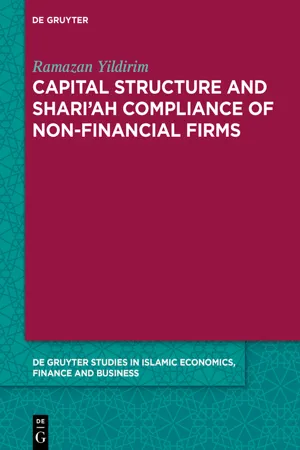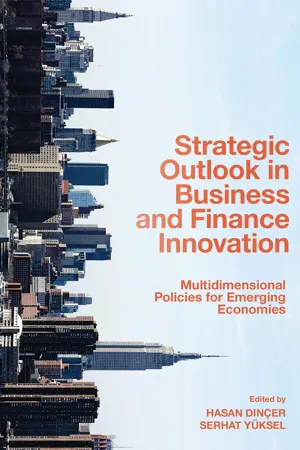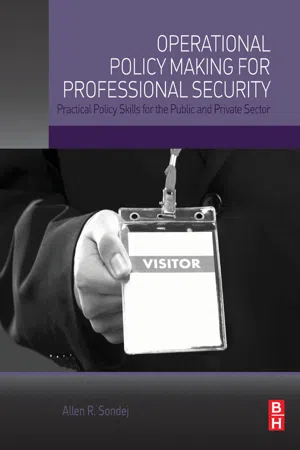Business
Pecking Order Theory
The Pecking Order Theory in business refers to the concept that companies prefer to use internal financing rather than external financing, and when external financing is necessary, they prefer debt over equity. This theory suggests that firms have a hierarchy of financing sources, with retained earnings being the most preferred, followed by debt, and then equity as a last resort.
Written by Perlego with AI-assistance
Related key terms
7 Key excerpts on "Pecking Order Theory"
- Ramazan Yildirim(Author)
- 2021(Publication Date)
- De Gruyter(Publisher)
45Above, we have shown mixed findings of the validity of the Pecking Order Theory. This accounts for the main problems derived from the asymmetric information among the different stakeholders, i.e., adverse selection or moral hazard.462.4.3 Critical Comments on Pecking Order Theory
As mentioned above, the agency theory tries to find a mixture of debt and equity financing to mitigate such agency costs. In contrast, the Pecking Order Theory rationale does not arise from a given capital structure, but rather from asymmetric information between managers (insider) and potential investors (outsider).Pecking Order Theory rejects the idea of a firm’s optimal target capital structure. It suggests a flexible approach in which firms can consider structuring their capital at any point in time. In the words of Myers (2001 , p. 93), “Each firm’s debt ratio[,] therefore reflects its cumulative requirement for external financing.” This indicates that the number of investment opportunities with positive NPV and the available cash and securities dictates the capital structure. Consequently, profitable firms with only a few investment opportunities have no benefit of issuing debt, thus keep their leverage ratio low. The more profitable a firm, the more internal funds, aka cash, can be generated. Upcoming investment opportunities can be financed internally that consequently keep their leverage ratio low. Firms with the limited use of external financing can maintain “financial flexibility”, which is considered one of the most important capital structure determinants, according to Graham and Harvey (2001) study. Empirical studies have shown the firm’s preferences for internal financing compared to equity as external financing.47- Robert Blackburn, Dirk De Clercq, Jarna Heinonen, Robert Blackburn, Dirk De Clercq, Jarna Heinonen(Authors)
- 2017(Publication Date)
- SAGE Publications Ltd(Publisher)
17 Financing Entrepreneurial Ventures Colin Mason Introduction The Pecking Order Theory is a long-standing feature in the entrepreneurial finance literature (Myers, 1984). It suggests that firms adopt a ranking of sources of finance. For cost and control reasons firms will prefer internal finance (personal funds, retained profits) over external finance. When external finance is required then debt will be preferred over equity, which requires the sale of shares in the business and hence dilutes control by bringing external investors into its ownership. But in reality new businesses with growth ambitions – which we will term entrepreneurial businesses – are likely to encounter the ‘valley of death’ (Figure 17.1), which describes the situation in which they encounter a period of negative cash flow resulting from heavy expenditure on research and development, product development and scaling up before their product or service brings in sufficient revenue from customers to generate profits. Banks seek to lend to established businesses that are profitable, have collateral as security for the loan and strong cash flow to repay the loan. Businesses in the ‘valley of death’ do not meet any of these criteria. This means that entre-preneurial businesses – and new technology-based firms in particular – will turn to equity finance at a much earlier stage in their development than predicted by the pecking order hypothesis (Riding, Orser & Chamberlin, 2012; Sjögren & Zackrisson, 2005). However, even providers of equity finance – primarily business angels and venture capital funds – are unlikely to invest in firms at the start-up stage because they are too ‘informationally opaque’ (Berger & Udell, 1988)- eBook - ePub
Strategic Outlook in Business and Finance Innovation
Multidimensional Policies for Emerging Economies
- Hasan Dinçer, Serhat Yüksel, Hasan Dinçer, Serhat Yüksel(Authors)
- 2021(Publication Date)
- Emerald Publishing Limited(Publisher)
Myers (2001 ) argues that the fact that interest on debt is deducted before tax payment, the use of debt provides benefit to the firm in the form of tax shield. However, increasing use of debt magnifies firms’ default tendencies on interest payment which may lead to bankruptcy. Therefore, the trade-off theory advocates for an optimal capital structure with the level of debt that reduces bankruptcy risk while maximizing the benefits for debt finance. In addition to bankruptcy costs, agency costs may also arise from the increasing use of debt emanating from the decisions some debt suppliers inaugurate. Firm debtors may put in place measures such as restrictive covenants to protect their funds.The Pecking Order Theory advocated by Myers and Majluf (1984 ) alternates the trade-off theory. The basic assumption of this hypothesis is that firms do not seek to minimize cost of capital, instead, they pursue additional finance in preferential order. In sourcing finance, firms will first resort to retained earnings and then will favor debt usage over equity financing. Firms consider the issue of new equities as the last financing tool.Empirically, the debate on the theory that broadly explains firms financing decisions is yet to be settled in the capital structure literature. Following the theoretical arguments, numerous studies have probed into the factors influencing capital structure. For instance, Huang and Song (2006 ) conducted an empirical analysis on the factors determining Chinese firms’ capital structure for the period 1994–2003. Applying the ordinary least squares (OLS) method on data of 1,200 firms, they evidenced that profitability, growth opportunities, managerial ownership, and tax significantly negatively determine firms’ total debt. The results also showed that asset tangibility positively and significantly influences the debt level of Chinese firms.Using manufacturing firms with data spanning 2003–2007, Sheikh and Wang (2011 ) analyze how firm-level characteristics can potentially drive capital structure decisions in Pakistan. From the analysis, the results show that firms’ capital structure decisions are motivated by profitability level, the size of firms and the asset tangibility, earnings volatility, and firms’ liquidity level. Abdeljawad, Mat-Nor, Ibrahim, and Abdul-Rahim (2013 - eBook - ePub
- Anton Miglo(Author)
- 2016(Publication Date)
- Palgrave Macmillan(Publisher)
The authors argue that these results are consistent with the debt capacity in the pecking order model. De Jong, Verbeek, and Verwijmeren (2011) test the static trade-off theory prediction that a firm increases leverage until it reaches its target debt ratio, and the prediction of POT that debt is issued until the debt capacity is reached. It is found that POT is a better descriptor of firms’ issue decisions than the static trade-off theory. Dong et al. (2012) study market timing and pecking order in a sample of debt and equity issues and share repurchases of Canadian firms from 1998 to 2007. They find that only when firms are not overvalued do they prefer debt to equity financing. Saumitra (2012) tests POT for an emerging economy through a case study of the Indian corporate sector that includes 556 manufacturing firms over the period 1997–2007. The study finds strong evidence in favor of the pecking order hypothesis. Bhama et al. (2015) examine firms (in India and China) with normal as well as large deficits and surpluses. The study finds that Indian and Chinese firms frequently issue debt when they have normal deficits. The pecking order results are less supportive for Indian firms with large deficits. Mogilevsky and Murgulov (2012) examine underpricing of private equity backed IPOs listed on a major US stock exchange between January 2000 and December 2009. The authors identify 265 private equity backed IPOs and compare these with concurrently listed venture capital (VC) backed and non-sponsored IPOs. The results indicate that, on average, private equity backed IPOs experience a significantly lower level of underpricing than venture capital backed and non-sponsored IPOs. 3.4 When Incumbent Shareholders Are Risk -Averse In traditional pecking order models, like the one discussed in the previous section, good quality firms are forced to use internal funds if available to avoid adverse selection problems and a loss in value - eBook - ePub
Tourism, Hospitality and Digital Transformation
Strategic Management Aspects
- Kayhan Tajeddini, Vanessa Ratten, Thorsten Merkle, Kayhan Tajeddini, Vanessa Ratten, Thorsten Merkle(Authors)
- 2019(Publication Date)
- Routledge(Publisher)
6THE APPLICATION OF THEORIES ABOUT CAPITAL STRUCTURE
Pecking order, trade-off and signaling in the hotel units in Portugal
Aida Maria de Brito Martins, Joaquim Carlos da Costa Pinho and Graça Maria do Carmo Azevedo6.1 Introduction
Decisions about the components of the capital structure, that is, how companies use their own and other capital to finance their assets, are critical to companies (Couto & Ferreira, 2010; Singh et al., 2014). Over the last few decades, several theories on capital structure have been developed, notably Trade-off (Kraus & Litzenberger, 1973; Scott, 1977; Kim, 1978), Pecking order (Myers, 1984) and Signaling (Leland & Pyle, 1977; Ross, 1977). According to the Trade-off theory, the companies aim to achieve an optimal level of debt, which takes into account the combination between tax benefits of debt and the costs of insolvency of the company, whereas for the theory Pecking order the changes in debt are a consequence of the financial needs of companies, which must exhaust domestic sources of financing first, followed by indebtedness and only in the last option the issuance of capital abroad. Signaling theory is based on the asymmetry of information between two parties (Connelly et al., 2011) and argues that the value of securities issued by companies will depend on how investors will interpret financial decisions as evidence of future corporate income streams; higher levels of debt issuance may be interpreted as positive signs.The various studies carried out on the capital structure of companies have concluded that this is related to some business characteristics. These studies have been applied to different sectors of business activity in different countries, and the results obtained have been divergent (Titman & Wessels, 1988; Couto & Ferreira, 2010; Serrasqueiro & Nunes, 2012; Wellalage & Locke, 2013; Kühnhausen & Stieber, 2014; De Luca, 2015; Serrasqueiro & Caetano, 2015; Panagiotis, 2016). - eBook - ePub
Operational Policy Making for Professional Security
Practical Policy Skills for the Public and Private Sector
- Allen Sondej(Author)
- 2015(Publication Date)
- Butterworth-Heinemann(Publisher)
While working as an account manager for the now defunct California Plant Protection, I was performing a security follow-up of an officer on a security tour. This particular tour was an exterior motor patrol and had multiple security tour verification system locations. The motor officer had to document the inspection with a clock and key system. As part of the follow-up, I waited at the most remote site on the property and remained for the tour stop to occur. After 90 minutes, the officer did not stop at the location, and I went to find out what the issue was. I located him, parked in the executive garage, asleep. When I confronted him, I noted that he had all of the tour keys in the vehicle with him. He had brought tools in from home and removed the keys on his first tour and replaced them on his last tour of the night. His justification was that he was forced to work midnights and should have been assigned day shift because of seniority. The typical follow-up for tours was to verify that the records from the security tour verification system showed key strikes. The assumption was made that the routine of making tours was being followed, and because it always happened before, it would always happen. The likely time span of this security breach was approximately seven weeks, the time that elapsed from his failed shift bid. The factors in the organizational setting involved both human and functional factors. The human factor was the implication of the expectancy theory, job satisfaction, and supervisory complacency. The functional factor was that there was only one vehicle assigned to the security department, making inspections by line supervisors on remote key sites inconvenient. These, of course, resulted in a change in operational policy to include random daily checks of key sites by supervisors and additional training on the dangers of complacency and the importance of documented patrol tours. Sometimes the problems of organizational setting are not focused on the security personnel. Sometimes it is the perception of the members of the organization regarding their status.Organizational Pecking Orders
An organizational pecking order is nothing more than an informal and often unauthorized rank structure. The ranks come with perceived privileges and can either be fully unsanctioned or unsanctioned but tacitly permitted. As a security policy maker, it is essential to recognize the existence and extent of the pecking order and if it is completely unsanctioned or tacitly permitted. If tacitly permitted, this factor must be considered in any policy-making decision. Failure to recognize it can lead to complications and potentially, to security breaches.Once when I was a security manager in a very large pharmaceutical company in the northeast United States, part of my responsibility was to manage a uniformed security force. The site was a modern and prestigious corporate office and housed many of the best and the brightest of the company. There was clearly a pecking order, and it went something like this: In the top tier were the executives of the company and their staff members. These persons had the best offices and the best amenities. Just under them were the company scientists and researchers, who were housed in the research areas and also had great amenities. Next came the administrative staff of the company and then the support staff employed by the company, who were typically union personnel. All in all, the top tier members were actual company employees.The second tier consisted of the experts - eBook - ePub
Handbook of the Economics of Finance SET:Volumes 2A & 2B
Corporate Finance and Asset Pricing
- George M. Constantinides, Milton Harris, Rene M. Stulz(Authors)
- 2013(Publication Date)
- North Holland(Publisher)
Thus, much of the existing evidence of pecking-order policies, from Donaldson (1961) to Fama and French (2002), is at face value equally consistent with pervasive managerial optimism. And the notion of pervasive managerial optimism does not seem farfetched. In Graham’s (1999) survey, almost two-thirds of CFOs state their stock is undervalued while only three percent state it is overvalued. Such responses are all the more striking given that the survey was taken shortly before the Internet crash. To distinguish optimism from other explanations of pecking order behavior, such as adverse selection as in Myers and Majluf (1984), a natural test would use cross-sectional variation in measured optimism to see whether such behavior is more prevalent in firms run by optimists. To our knowledge, exactly this test has not been conducted, but certain results in Malmendier and Tate (2005, 2008) have a related flavor. First, and as noted above, firms run by optimists (as identified by their options-based proxies for optimism) display a higher sensitivity of investment to internal cash flow. Second, managers classified as optimistic show a differentially higher propensity to make acquisitions when they are not dependent on external equity. Bounded rationality also makes an appearance in financial policy in the form of the use of simple targets for capital structures and payouts. Graham and Harvey (2001) find that 10% of the CFOs in their sample use a “very strict” target debt-equity ratio and 34% use a “somewhat tight” target or range. Such leverage targets are typically defined in terms of book values of equity and debt, and Welch (2004) confirms that market leverage is largely allowed to float with stock prices. Whether this is a rule of thumb, a boundedly rational focus on slower moving book values, or a rational recognition that book values are a better proxy for liquidation value than market value is hard to prove
Index pages curate the most relevant extracts from our library of academic textbooks. They’ve been created using an in-house natural language model (NLM), each adding context and meaning to key research topics.






